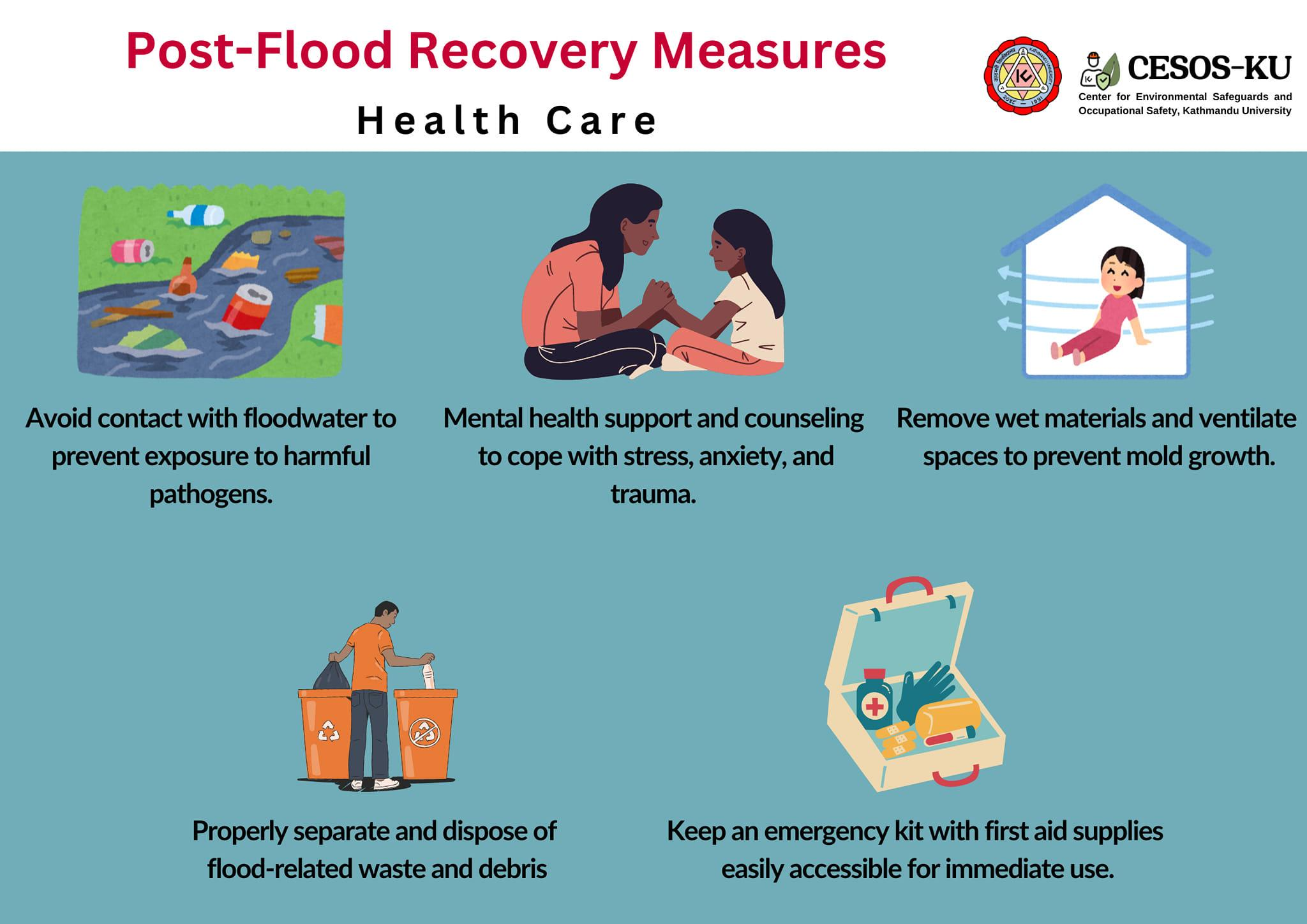
The recent floods that swept across Nepal due to heavy rains in late September 2024 left a trail of destruction, with hundreds of human lives taken away and thousands displaced. There have been similar incidents of flooding in parts of the world, ranging from Vietnam to Austria.
Although critics would say, “These damages could have been lessened with better preparation,” for now, the focus is on how to recover. Immediate and strategic measures in post-flood recovery are much needed, not only for supporting the communities affected by floods but also for guiding the various stakeholders in planning sustainable, long-term flood management strategies.
So it’s time to look into key measures for effective post-flood recovery.
Staying cautious

Even though general knowledge regarding basic flood safety etiquette, such as climbing rooftops, waterproofing of clothes, avoiding electronics, and keeping an ear for news updates, was followed in the recent Nepal floods, all turned out to be just futile measures.
Most of them became prey to delays in rescue operations. And now, with the approaching festive season, many travel to their hometowns and pass through the flood-affected areas. In the context of recent floods in Nepal, travellers should be updated by news media regarding regular road and weather conditions.
Safe and secure route conditions are critical to avoid risks. While basic safety protocols are known, the unpredictability of flood conditions makes it even more important to stay cautious during this time.
The recent floods in Nepal, have been giving way to rising health problems. Floodwaters often contain a myriad of pathogens leading to risks to citizens in the form of waterborne diseases. Nepal has become highly susceptible to cholera, diarrhoea, and dengue.
In addition to that, wet materials that have been building up can grow moulds and further complicate health conditions. Post-flood conditions often create the perfect breeding ground for insects, rodents, and snakes, posing serious health risks.
Stagnant water and decomposing animal bodies attract mosquitoes, flies, and rodents, which can carry infectious diseases. Food debris and waste piles further contribute to the spread of pathogens through insects and pests.
The situation is worsened by limited healthcare resources, particularly in rural areas, where infrastructure to address outbreaks is weak. Increasing incidents of dengue and cholera, apart from contamination of food and water, have stretched Nepali healthcare to its seams, and things can go haywire from here.
Proper clean drinking water and sanitation

Therefore, in terms of prevention, one must focus first on providing clean drinking water and sanitation, coupled with vaccination drives. Improvement in waste management, healthcare awareness among the general public, and quick response teams of the health department can prevent the outbreaks of less costly diseases.
Proper waste disposal, avoiding contact with flood water, following hygienic measures like boiling water before drinking, and avoiding contaminated food is essential in the prevention of post-flood epidemics. People must avoid skin contact with contaminated water, keep the house well-ventilated to avoid mould growth, and properly dispose of debris to minimise health risks from flood conditions.
To prevent outbreaks, it’s crucial to clean up animal remains and flood debris promptly. Wearing protective clothing, using insect repellents, and maintaining cleanliness are essential. Furthermore, interventions such as wearing masks during travel in dusty areas, such as Kathmandu, keeping emergency supplies that include first aid kits, and reaching out for consultation for mental health will keep communities healthier and stronger.
In light of the recent floods, several countries around the world, such as Bangladesh and Vietnam, have developed community-based disaster risk management programmes. These programmes improve local capacity in terms of early warning systems and response preparedness.
Resource-limited countries like Nepal can also establish similar measures by emphasising community participation and localised disaster preparedness, tapping indigenous knowledge, and promoting low-cost mitigation measures related to flood-resistant infrastructure.
However, disaster management in Nepal has faced delays due to a lack of coordination among government agencies. News reports have underlined that there is no proper emergency response mechanism in Nepal and its policy implementation has been poor.
In this regard, the multi-sectoral overall approaches taken for disaster management, along with focused investments in early warning systems and health infrastructure, will go a long way in enhancing preparedness for floods in the future.
Much of the effects of such calamities can be drastically minimized through proper, timely coordination among national and local governments and constant public education on disaster preparedness. These prevent health crises and structural damage in the future.























